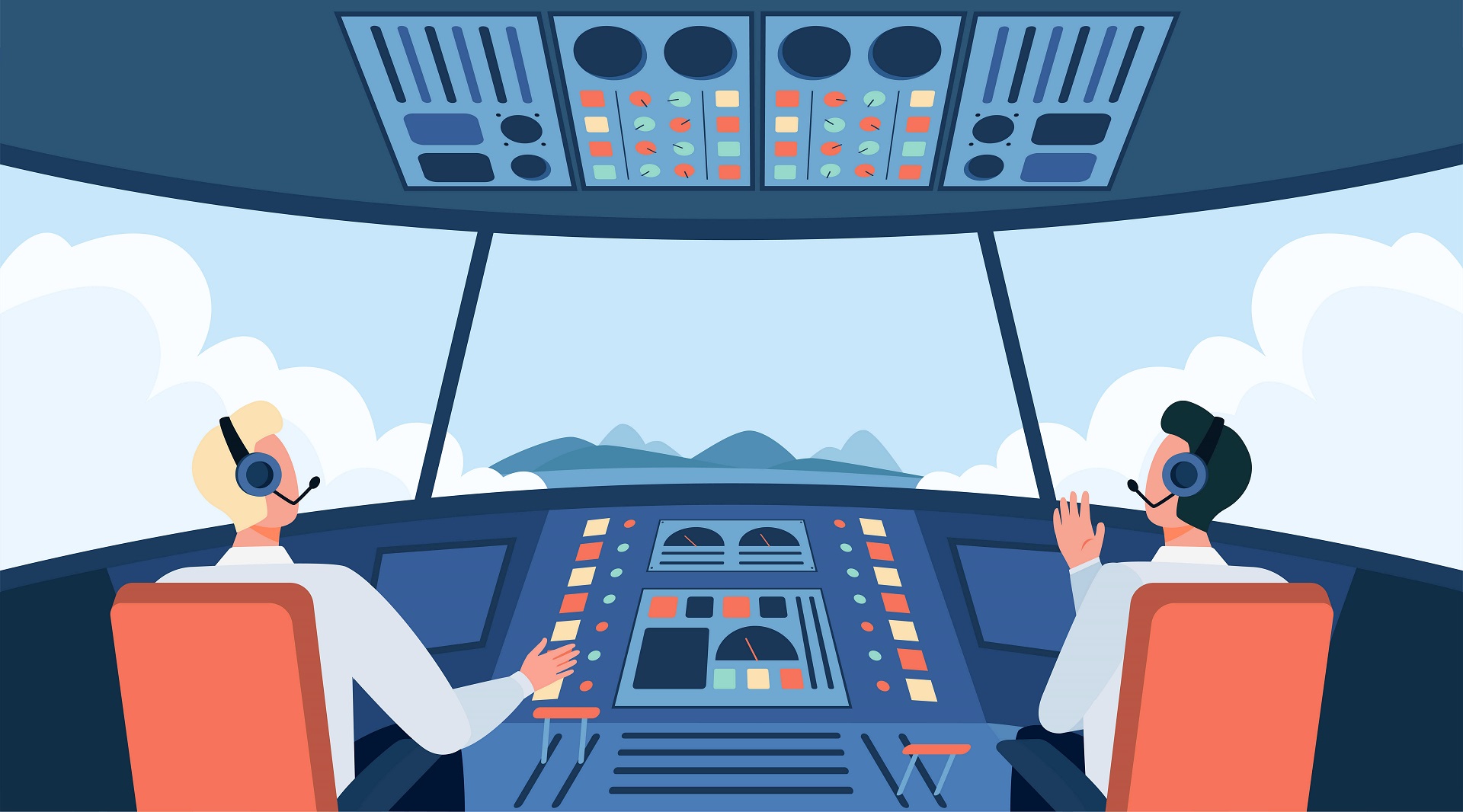
How to Become a Pilot
Discover the steps to becoming a professional pilot after 12th grade, including eligibility criteria, required courses, training programs, pilot license types, flight schools, costs, scholarship options, and career paths.

Many people have the dream of becoming pilots because they can enjoy an exciting and fulfilling career in the aviation sector. In India, becoming a pilot demands commitment, training, and a love of the air. We'll walk you through every step of becoming a pilot in India in this in-depth guide, which also covers the role of the pilot, educational requirements, test and preparation procedures, flight training, and possible salary opportunities.
The Pilot’s Role:
The safe operation and navigation of aircraft, as well as the comfort and safety of both passengers and cargo, are the responsibilities of pilots. They collaborate closely with cabin crew and co-pilots to carry out flight plans, react to weather, and make important decisions while in flight. Pilots can focus on a variety of tasks, including corporate, military, cargo, and commercial aviation.
Being a pilot is a demanding and fulfilling job. It calls for a high degree of expertise, technical understanding, and the capacity to remain composed under duress. Because they are in charge of briefing their crew, air traffic controllers, and managing any in-flight emergencies, pilots need to be outstanding communicators.
Educational Process:
Applicants who wish to become pilots must fulfill certain educational requirements. 10+2 (Class 12) is the minimum requirement, with mathematics and physics serving as core subjects. Those who want to become pilots can take a few different paths to get their license:
- Programs for Integrated Pilot Training: A few aviation academies provide integrated pilot training that combines flight instruction, ground school instruction, and skill development. Usually, these programs last between 18 and 24 months.
- Graduation with Flying Training: Applicants may enroll in flying schools for modular pilot training after earning a bachelor's degree. With this method, students can work toward their degree and finish their flight training gradually.
The choice between integrated and modular training is based on personal preferences as well as budgetary constraints. Modular programs provide flexibility for individuals who would rather finish training in phases, while integrated programs offer an organized approach and a quicker route to a commercial pilot license.
Preparation Process:
A pilot must be committed to and diligent in their work. Future pilots should have a solid background in physics and mathematics because these subjects are essential to comprehending aerodynamics and navigation. Maintaining good vision and physical fitness are also necessary requirements for the position.
Candidates can prepare for pilot training by:
- Enrolling in seminars and workshops pertaining to aviation.
- Becoming familiar with the rules and practices governing aviation.
- Joining a flying club to network with professionals and aviation enthusiasts.
- Gaining knowledge through flight simulation to hone fundamental flying abilities.
A sincere interest in aviation and a strong passion for flying are essential motivators that will propel an aspiring pilot through the training process.
Examination Process:
In India, candidates need to pass a number of exams administered by the Directorate General of Civil Aviation (DGCA) in order to receive a Commercial Pilot License (CPL). Topics including Air Navigation, Aviation Meteorology, Air Regulations, and Technical General are covered in the exams.
Candidates may sit for the DGCA exams at accredited aviation academies or flying schools. It requires passing these tests in order to be eligible for flight training.
Flight Training: Candidates move on to the flight training phase once they pass the DGCA exams. In addition to ground school classes, flight training consists of actual flying hours. In this stage, candidates learn how to fly the aircraft, deal with emergencies, and put their theoretical knowledge to use in real-world situations.
Flight training is typically divided into three stages:
- The Private Pilot License (PPL) stage concentrates on radio telephony, navigation, and fundamental flying abilities. A minimum of 40 flying hours, including solo and cross-country flights, are required of candidates.
- Commercial Pilot License (CPL): Those who have earned their PPL move on to CPL training. This level covers night flying, instrument flying, and cross-country flying using more sophisticated flying techniques. A minimum of 200 total flying hours are needed to obtain a CPL.
- Type Rating and Additional Endorsements: Pilots may require type rating training in order to operate certain aircraft types. Pilots can also apply for endorsements in other categories, like seaplane or multi-engine endorsements.
License and Career Options:
The Commercial Pilot License (CPL) will be awarded to candidates upon successful completion of their flight training. They can begin working as a co-pilot for commercial airlines or charter firms with a CPL.
Pilots can advance in their careers through experience and flying hours. Many pilots begin their careers as co-pilots and advance to captaincy as they accumulate seniority and more flight hours.
There are various career paths for pilots in India, such as:
- Pilots can work as pilots for commercial airlines, transporting travelers both domestically and internationally.
- Corporate Pilot: Pilots can fly business executives and wealthy people on private planes while employed by corporations.
- Cargo Pilot: Using special cargo aircraft, cargo pilots move cargo and goods.
- Military Pilot: Those who wish to serve their nation may become pilots in the Indian Air Force or Navy.
Salary Prospects:
The type of aircraft flown, experience level, and employer are among the variables that affect a pilot's pay in India. In the commercial airline sector, entry-level pilots may start earning between ₹5 and ₹10 lakhs annually. Pilots can make between ₹15 and ₹30 lakhs or more annually depending on their seniority and level of experience.
It's important to remember that pilot salaries frequently include a range of benefits, including lodging, medical care, and allowances, which increases the appeal of the entire compensation package.
It's an exciting journey to become a pilot in India; it takes a combination of education, willpower, and a sincere love of aviation. Getting the required education, passing the DGCA exams, finishing flight training, and getting the licenses and endorsements are all steps in the process.
A career as a pilot offers a wide range of options, including flying corporate jets, commercial airliners, and military aircraft. It's a route that lets people travel the world, explore the skies, and have a significant impact on the vibrant, ever-changing aviation sector. The road to becoming a pilot is expected to be an amazing experience for individuals who have the desire to fly and will lead to a happy and satisfying career in the aviation industry. In the skies of India and beyond, aspirant pilots can achieve incredible heights with commitment, diligence, and a passion for the aviation industry.


